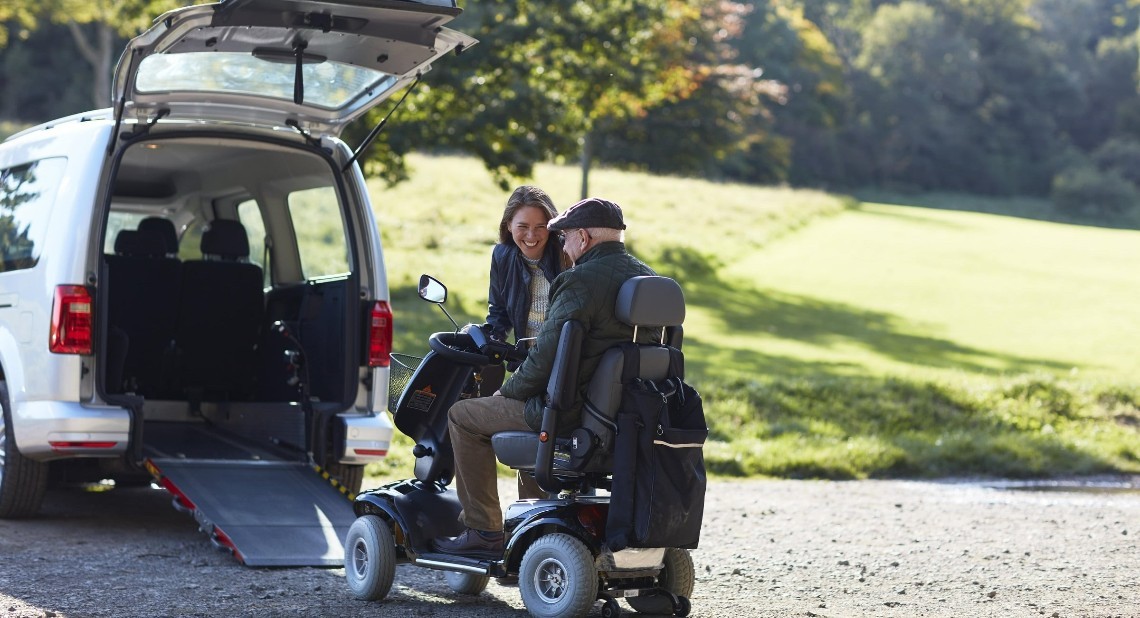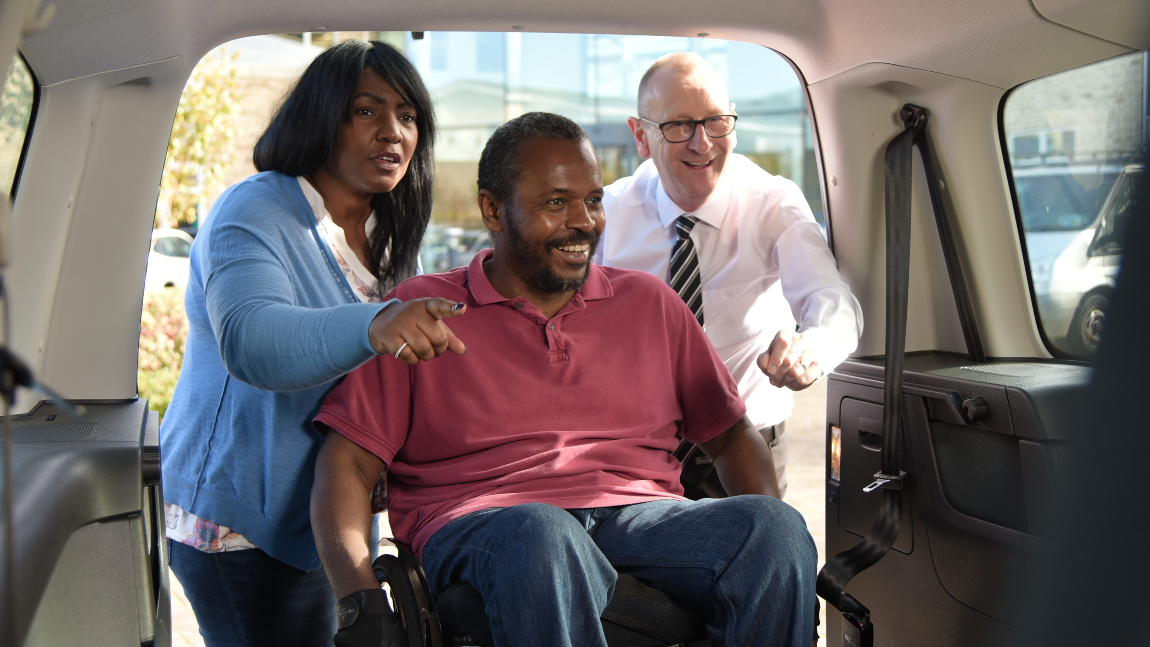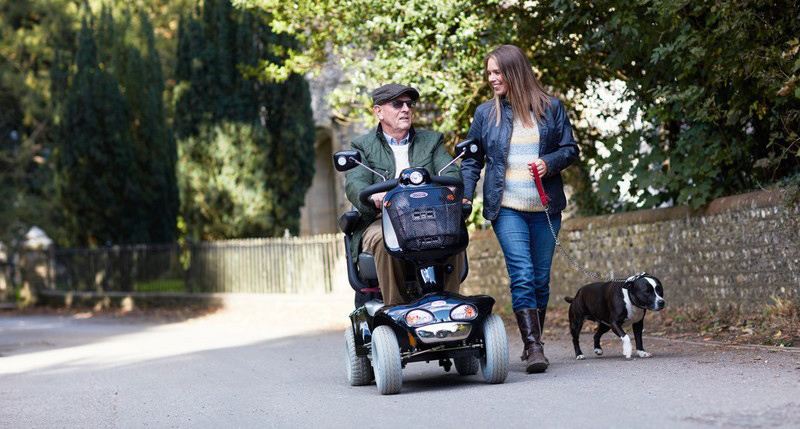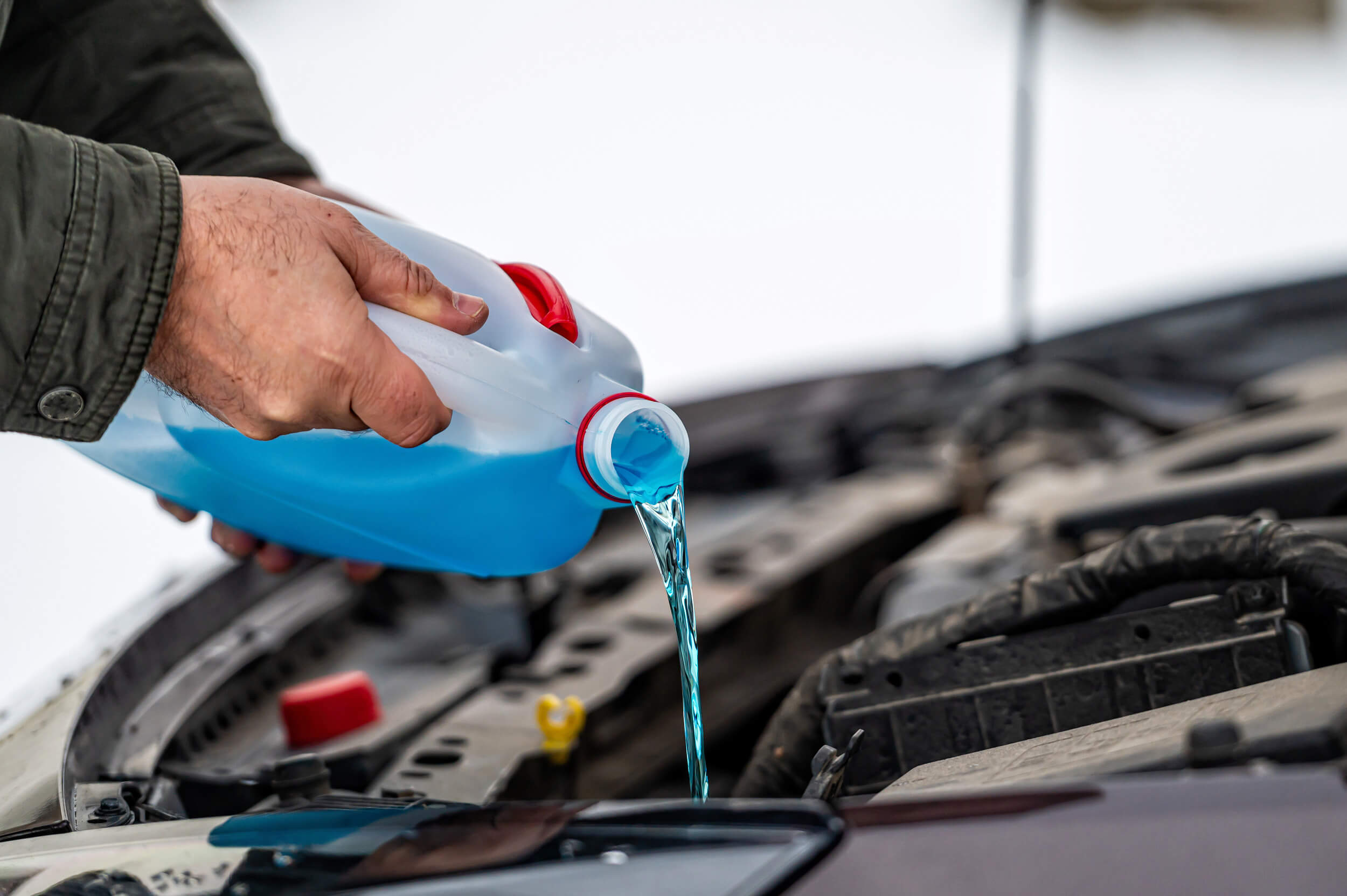Every vehicle has a battery. And flat batteries are one of the most common problems breakdown services deal with in winter. Lots of things can impact your vehicle’s battery that you might not know about. Whether you drive a car or a Wheelchair Accessible Vehicle (WAV), we want to help you look after your battery and avoid problems.
Every vehicle, including electric vehicles (EVs), has a small 12-volt battery. This battery helps start the vehicle and powers things like the lights, radio, locks, any adaptations you might have.
While it’s most common in the winter, car battery problems can happen at any point in the year. But you can have peace of mind knowing that your breakdown cover is part of your all-inclusive package with the Motability Scheme. You’ll also get insurance, servicing and repairs included too.
To help stop battery problems before they happen, we’ve shared some easy tips to follow.
- How to keep your battery charged
- Why batteries go flat
- Top battery tips for WAVs and adaptations
- Top battery tips for EVs
- What to do if you get a flat battery
How to keep your battery charged
There are a few simple things you can do to help keep your battery in good working order:
- Use your vehicle regularly: The easiest way to keep your car battery healthy is to drive it regularly. You should try not to leave it sitting for too long without using it. If you’ve not driven your vehicle for a while, try to go for a longer drive next time to give the battery a good charge.
- Check your lights and doors: After driving in the dark, make sure you switch your lights off. Leaving your lights on overnight can quickly drain your battery. You should also make sure your doors and boot are shut properly, and your vehicle is locked. If it’s not fully shut down, then it can make the battery lose power.
- Check your electricals: If you have any electronics fitted, like a dash cam, make sure these are turned off. This can also use cause your battery to go flat.
Why batteries go flat
Modern vehicles will always use some of the battery when you’re not using them. This is because of features like alarms and key fobs. But this should not cause the battery to go flat.
A flat battery usually happens if you do not drive your car enough or only take short trips. This is because the battery needs longer drives to get fully charged and stay in good shape.
Top battery tips for WAVs and adaptations
If you have a WAV or adaptations fitted to your Scheme car, you should take extra care with your vehicle’s battery. This is because certain adaptations and converted features will often rely on the battery as a power source. This means that it’s having to work a little harder to use these features.
Here’s a few things to keep in mind:
- If your WAV is fitted with a winch or electro-reels for the front wheelchair tie-downs, make sure these are switched off whenever you park your vehicle.
- If you have a tail lift, try to make sure you have everything you need before using the lift. Using it too many times in a short space of time can as using this reduce battery power.
- Try and take longer drives every now and again. If you’re doing regular short trips a couple of times a week, then your battery is using more power than it can recharge.
You’ll get an annual WAV check as a part of your lease with the Scheme. This is carried out by your WAV supplier at your home. They’ll check to make sure your WAV is in good working order and see if any repairs are needed.
Top battery tips for EVs
EVs also have a big battery that runs the whole car. This big battery is what powers the car’s motor, helping it move. The difference is that the 12-volt battery takes care of things like starting the vehicle and running the electronics, while the bigger battery gives the car the energy it needs to drive.
Here’s a few things to keep in mind:
- EVs run most efficiently when the battery is charged between 20% and 80%. It’s perfectly fine to charge up to 100% for longer journeys, but this is the recommendation for everyday driving. You should also try to avoid it dropping too low.
- You do not need to charge your EV every day. Overcharging your vehicle when it’s not needed can put more stress on the battery.
- If you have a home charger, you can warm up or defrost your vehicle while it’s still plugged in. This is called preconditioning. It’s great for cold mornings because it uses electricity from your house, not your vehicle’s battery.
Sign up to our EV email series to learn more about leasing an EV with the Scheme.
What to do if you get a flat battery
If your battery runs out of charge and your vehicle will not start, RAC Motability Assist are on hand to help. They’ll check your vehicle, figure out the problem, and could charge or replace your battery.
And if you have an EV, they have two innovative solutions to help you get back on the road quickly; the EV Boost mobile charging system and the All-Wheels-Up rapid recovery system.
Download the myRAC app
The myRAC app is the quickest and easiest way to report a breakdown to the RAC.
Even if you’re not sure where you are, report your breakdown using the app and the RAC will know exactly where to find you.
They’ll organise a patrol straight away and you’ll get a confirmation text and regular updates on your patrol’s arrival time.
If you keep having issues with your battery, it’s a good idea to talk to your dealer or WAV supplier. There might be a problem with another part of the vehicle that is impacting the battery. Remember, you can easily find the contact details for your dealer or supplier in your Motability Scheme online account.
Sign in to your online account
Related articles
Looking after your Wheelchair Accessible Vehicle (WAV)
Why EVs need less maintenance than petrol or diesel cars
My experience of a breakdown in my WAV
![]()








